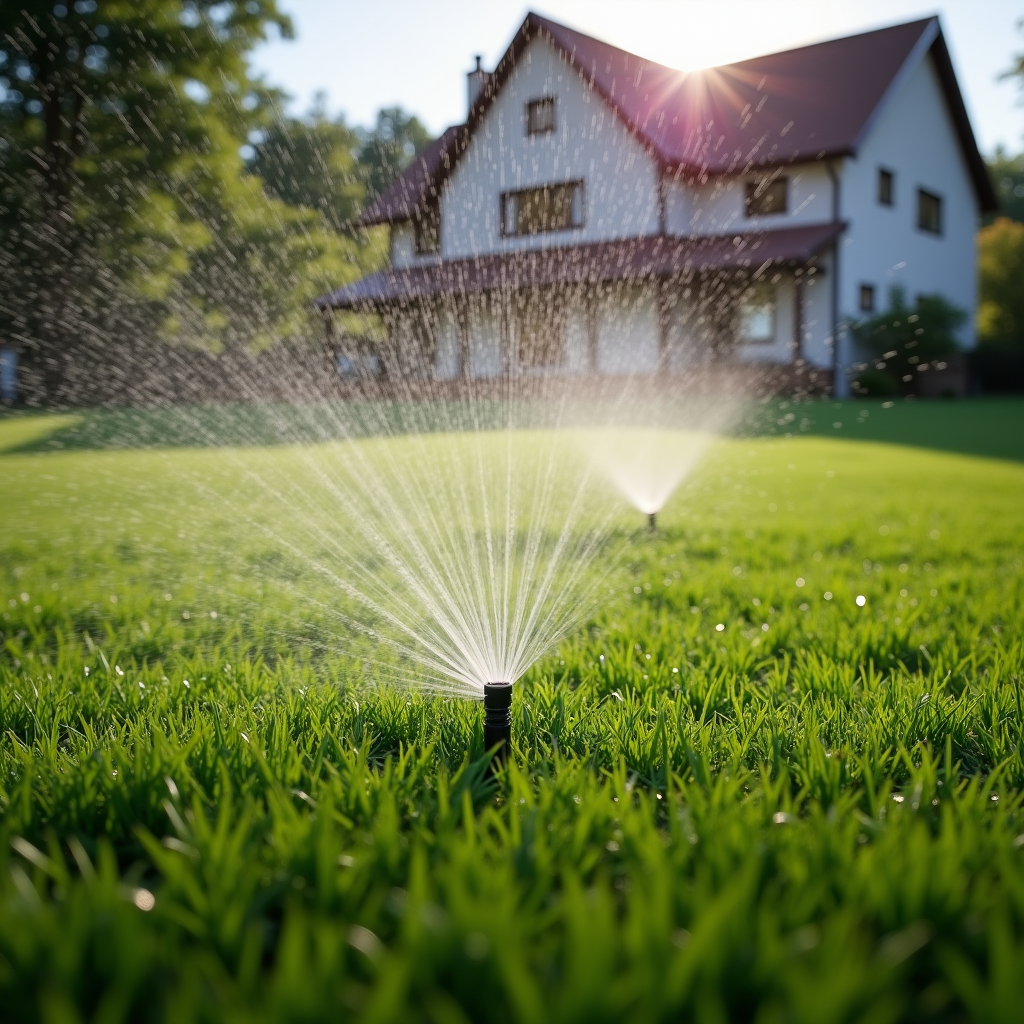Creating a stunning landscape is not just about planting a few flowers and laying down some grass; it’s an art that requires knowledge, patience, and the right techniques. In this comprehensive guide, we will explore how to create a breathtaking landscape using effective lawn care techniques. Whether you’re a seasoned gardener or just starting, this article will provide you with the insights you need to transform your outdoor space into a paradise.
Understanding the Basics of Lawn Care
What is Lawn Care?
Lawn care refers to the cultivation and maintenance of turfgrass for aesthetic and recreational purposes. This includes mowing, watering, fertilizing, aerating, and controlling pests. Well-maintained lawns not only enhance the beauty of your home but also provide environmental benefits such as reducing soil erosion and improving air quality.
Why is Lawn Care Important?
A well-cared-for lawn can serve as a centerpiece for your landscape design. It provides a lush green backdrop for garden beds and patios while offering a space for family activities. Good lawn care practices ensure healthy grass growth, which in turn contributes to the overall appeal of your property.
Essential Lawn Care Techniques
1. Choosing the Right Grass Type
Selecting the appropriate grass type for your climate is vital. Different types thrive under varying conditions:
- Cool-Season Grasses: Such as Kentucky bluegrass or fescue, are best suited for northern climates. Warm-Season Grasses: Such as Bermuda or zoysia, flourish in southern regions.
How to Choose?
Consider factors like sunlight exposure, foot traffic levels, and water availability when selecting grass seed.
2. Soil Preparation
Before planting grass seed, it’s crucial to prepare your soil properly:
- Testing Soil pH: Use a soil test kit to determine acidity levels. Amending Soil: Add lime to raise pH or sulfur to lower it based on test results.
This preparation sets the stage for strong root development.
3. Proper Mowing Techniques
Mowing isn’t just about cutting grass; it’s an essential part of lawn care:
- Mow at the Right Height: Keep grass between 2.5 to 4 inches tall depending on species. Keep Blades Sharp: Dull mower blades tear grass rather than cut it cleanly.
Benefits of Proper Mowing:
Regular mowing encourages thicker turf and discourages weed growth.
4. Watering Wisely
Watering deeply but infrequently promotes healthy root systems:
- Ideal Schedule: Water early in the morning or late afternoon. Amount Needed: Generally, lawns need about one inch of water per week.
Signs of Underwatering:
Watch for signs like wilting or browning tips on grass blades.
5. Fertilization Methods
Fertilizing provides essential nutrients that promote growth:
- Types of Fertilizers: Synthetic: Quick-release formulas offer immediate nutrients. Organic: Slow-release options improve soil health over time.
When Should You Fertilize?
Typically in early spring and fall for cool-season grasses; summer months are ideal for warm-season types.
6. Aeration Practices
Aeration helps relieve compacted soil and improves root penetration:
- Best Time to Aerate: Early spring or fall when grass is actively growing. Methods: Core Aeration: Removes plugs from soil. Spike Aeration: Creates holes without removing plugs.
Benefits of Aeration:
Improved water absorption and nutrient uptake lead to healthier lawns.
Advanced Lawn Care Techniques
7. Pest Control Strategies
Managing pests is crucial in maintaining lawn health:
- Use integrated pest management (IPM) strategies that combine cultural practices with targeted pest control methods.
Natural Remedies:
Diatomaceous earth can deter crawling insects without harming beneficial organisms.
8. Weed Management Tactics
Weeds compete with grass for nutrients and water; effective strategies include:
- Pre-emergent herbicides applied early in spring.
How Can You Identify Weeds?
Familiarize yourself with common weeds in your area so you can treat them effectively before they spread!
9. Dethatching Techniques
Thatch builds http://augustdrvu676.raidersfanteamshop.com/how-to-use-color-theory-in-your-north-carolina-landscape-design up over time and can suffocate roots:
- Use dethatching equipment during peak growing seasons.
When Should You Dethatch?
Usually once every couple of years unless thatch layers exceed half an inch thick.
Designing Your Landscape Around Your Lawn
10. Creating Focal Points in Your Landscape Design
A stunning landscape often incorporates focal points like sculptures or unique plants:
Consider height variations—tall plants at the back, shorter ones at the front. Use pathways to draw attention toward these features!11: Incorporating Flower Beds
Flower beds add color contrast against green lawns:
Tips for Designing Flower Beds:
Choose perennial plants for longevity and seasonal interest. Group plants by color or bloom time for visual harmony!12: Installing Pathways
Pathways guide visitors through your landscape while protecting your lawn from wear:
Materials Options Include:
Stone Gravel Pavers13: Adding Mulch
Mulch retains moisture while suppressing weeds:
Benefits Of Using Mulch:
Regulates soil temperature Enhances aesthetic appeal14: Incorporating Hardscapes
Hardscaping elements such as patios enhance functionality:
Ideas For Hardscape Features Include:
Benches Fire pits Retaining walls15: Utilizing Decorative Elements
Decorative items like birdbaths can bring life into any garden:
Choosing The Right Decor:
1.. Match items with existing styles! 2.. Consider scale—don’t overpower small spaces!
16: Seasonal Maintenance Tips
Maintaining landscapes requires seasonal adjustments:
Spring Tasks Include:
1.. Reseeding bare patches 2.. Cleaning debris from flower beds!
Fall Tasks Include:
1.. Raking leaves 2.. Preparing gardens for winter!
17: Sustainable Practices in Lawn Care
Implementing eco-friendly practices helps reduce environmental impact:
Sustainable Practices Include:
1.. Using organic fertilizers 2.. Collecting rainwater!
18: Benefits of Native Plants
Integrating native flora supports local ecosystems:
Advantages Of Using Native Species Include:
1.. Lower maintenance requirements! 2.. Attracts local wildlife!
19: Planning For Wildlife Habitats
Creating spaces that attract pollinators enhances biodiversity:

Features To Encourage Wildlife Include:
1.. Nectar-rich flowers 2.. Nesting sites!
20: Winter Preparation Techniques
Preparing landscapes ahead of winter preserves their integrity:
Winter Prep Steps Include:
1.. Protecting sensitive plants 2.. Trimming back perennials after frost!
21 : Tools You’ll Need For Lawn Care
Investing in quality tools simplifies maintenance tasks!
Essential Tools Include:
1.. Lawnmower 2.. Rakes! 3.. Pruners!
22 : Hiring Professionals vs DIY
Deciding whether to hire professionals depends on complexity level!
Pros And Cons Of Each Option Include:
1.. Cost-effectiveness (DIY) 2.. Expertise (Professionals)!

FAQs About Creating Stunning Landscapes With Lawn Care Techniques
FAQ #1 : What Are The Key Components Of Lawn Care?
The key components include proper watering techniques, regular mowing schedules, appropriate fertilization methods, pest control strategies, and aeration practices—all working together to create a lush green space!
FAQ #2 : How Often Should I Water My Lawn?
Generally speaking, lawns require about one inch of water per week through rainfall or irrigation—preferably delivered all at once instead of frequent light sprinklings!
FAQ #3 : What Is The Best Time To Fertilize My Grass?
For cool-season grasses—early spring & fall are ideal times while warm-season varieties thrive on summer applications!
FAQ #4 : How Can I Control Weeds In My Yard Effectively?
Implement pre-emergent herbicides during springtime alongside regular mowing & fertilizing practices—they help keep those pesky invaders at bay!
FAQ #5 : Is Aeration Necessary Every Year?
While not strictly necessary yearly—if you notice compacted soils affecting drainage/healthiness—it may be worth considering every couple years instead!
FAQ #6 : Can I Create A Beautiful Landscape On A Budget?
Absolutely! Many budget-friendly options exist—native plantings often require less upkeep too plus DIY projects save money while allowing personalization throughout landscaping efforts!
Conclusion
Creating a stunning landscape involves much more than mere aesthetics—it requires dedication towards practicing effective lawn care techniques consistently over time too! From choosing suitable types/types suitable based upon climate conditions through implementing sustainable practices—the journey unfolds gradually yet rewarding ultimately leading toward lush greenery greeting all who pass by daily reminding us why investing effort into our outdoor spaces matters greatly! So roll up those sleeves & dive headfirst into transforming yours today—who knows what magic awaits just beyond those garden gates?